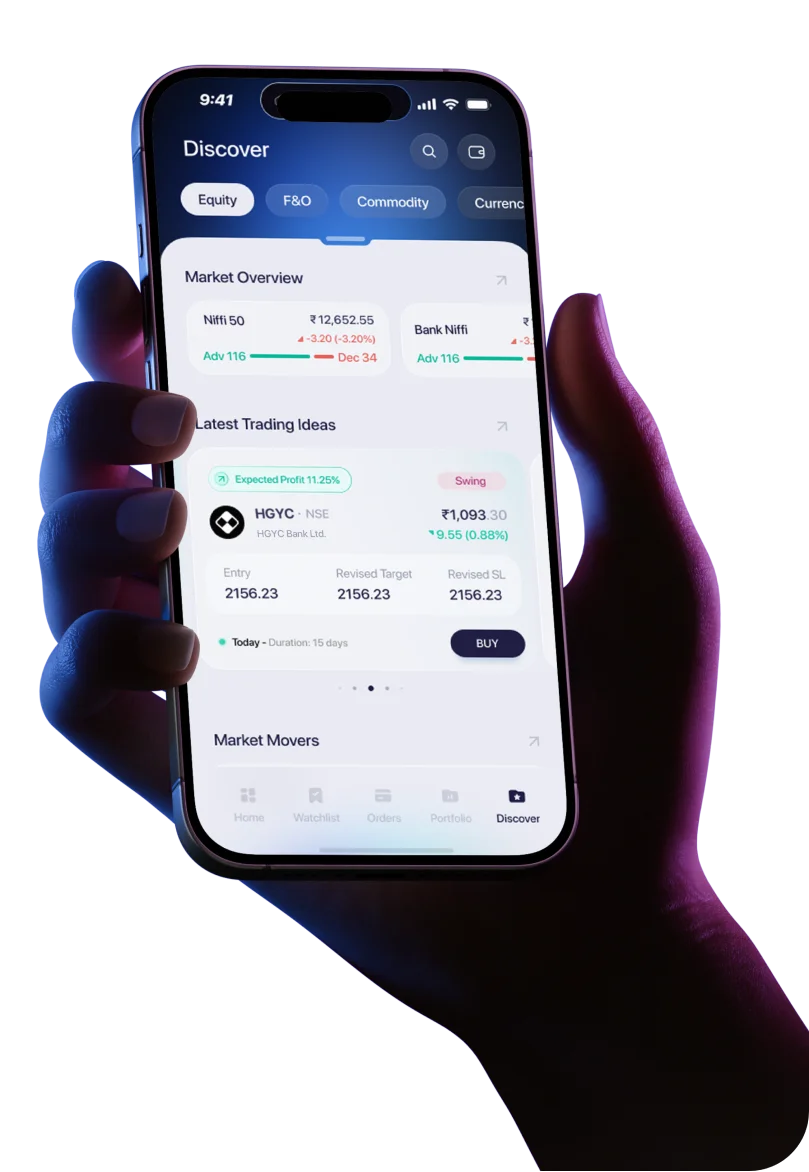In today’s fast-paced stock market, traders and investors are constantly seeking smarter and more flexible ways to manage risk and boost profits. One such tool is options trading, a type of derivative trading that allows you to benefit from both rising and falling markets.
At the heart of options trading are two fundamental instruments: Call Options and Put Options. These are the building blocks of more complex strategies, and understanding them is essential for any investor looking to enter the world of derivatives.
But many beginners feel overwhelmed with technical jargon, formulas, and confusing terms. The good news? It’s not as complicated as it sounds. Through simple analogies, real-world examples, and clear explanations, this article will guide you through what call and put options are, how they work, and why traders use them, especially in the Indian stock market.
Let’s start from the basics.
What is an Option in the Stock Market?
An option is a type of financial derivative, which means its value is derived from the price of another asset, usually a stock, an index like Nifty or Bank Nifty, or a commodity.
In simple terms, an option is a contract between two parties:
- The buyer of the option pays a premium for the right, but not the obligation, to buy or sell the underlying asset.
- The seller (or writer) of the option has the obligation to fulfil the contract if the buyer chooses to exercise their right.
Each option contract comes with key elements:
- Strike Price: The pre-agreed price at which the underlying asset can be bought or sold.
- Premium: The cost paid by the buyer to the seller to own the option.
- Expiration Date: The date on which the contract expires. Most options in India follow a monthly or weekly expiry cycle, with Thursday being the standard expiry day.
Options give traders flexibility and leverage, allowing them to take positions on stock movements without having to buy or sell the actual shares.
3. What is a Call Option?
A Call Option gives the buyer the right, but not the obligation, to buy the underlying asset at a predetermined price (strike price) within a specified time.
Simple Analogy:
Imagine booking a movie ticket in advance. You pay ₹200 to reserve a seat for a blockbuster film next week. If the ticket prices rise to ₹300 due to high demand, you still get to watch the movie for ₹200. That ₹100 profit is similar to how a call option works.
Call Option Example:
Let’s say Stock XYZ is trading at ₹100. You expect it to go up. You buy a call option with:
- Strike Price: ₹105
- Premium: ₹2
- Expiry: 1 week
Now, if on expiry the stock moves to ₹110, your profit = (₹110 - ₹105) - ₹2 = ₹3 per share.
But if the stock stays at ₹100 or goes below ₹105, the option expires worthless, and your loss is limited to the premium paid (₹2).
When to Buy a Call Option:
- When you expect the stock/index to rise significantly.
- When you want to gain exposure without buying the stock itself.
Call options are often used for bullish strategies, allowing traders to profit with limited risk and high leverage.
4. What is a Put Option?
A Put Option gives the buyer the right, but not the obligation, to sell the underlying asset at a fixed strike price before the expiry.
Simple Analogy:
Think of a put option like insurance on your house. You pay a premium to the insurer, and if the house value drops due to damage, you can claim compensation. Similarly, put options protect you when stock prices fall.
Put Option Example:
Suppose Stock ABC is trading at ₹100. You fear it might drop. You buy a put option:
- Strike Price: ₹95
- Premium: ₹3
- Expiry: 1 week
If on expiry the stock falls to ₹85, your gain = (₹95 - ₹85) - ₹3 = ₹7 per share.
If the stock stays above ₹95, you let the option expire, losing only the ₹3 premium.
When to Buy a Put Option:
- When you expect a stock/index to fall.
- As a hedging tool to protect your portfolio during uncertain markets.
Put options are key instruments for bearish strategies and are widely used by institutional investors for risk management.
5. Difference between Call and Put Option (Table)
Feature | Call Option | Put Option |
|---|---|---|
Buyer’s Right | Buy the underlying asset | Sell the underlying asset |
Expectation | Stock/index will rise | Stock/index will fall |
Profit Scenario | When price goes above strike + premium | When price goes below strike - premium |
Used In | Bullish strategies | Bearish or hedging strategies |
Risk to Buyer | Limited to premium paid | Limited to premium paid |
Who Should Use | Traders expecting upward movement | Traders expecting downward movement |
Real-Life Analogy | Movie ticket pre-booking | Insurance policy |
6. Who Should Trade Options and Why?
Options trading isn’t just for seasoned pros. It’s a versatile tool used by:
Short-Term Traders:
To capitalize on intraday or swing moves in Nifty, Bank Nifty, or stocks.
Hedgers:
Mutual funds, institutions, or HNIs use put options to protect portfolios from downside risks.
Retail Investors:
Retail traders use options to:
- Gain leverage
- Deploy low capital
- Implement strategies like spreads, straddles, or protective puts
Thanks to NSE’s weekly expiry cycles and deep liquidity in contracts like Nifty and Bank Nifty, options trading has become highly accessible and cost-effective.
7. Common Misconceptions and FAQs
“Options are like gambling.”
Reality: Options are strategic tools when used with understanding and discipline.
“You always lose money with options.”
While many beginners do face losses initially, learning risk management and position sizing changes the game.
“Options are only for experts.”
Not true! With platforms like Samco, even beginners can access education, tools, and simulators to practice.
8. Call & Put Option Profit/Loss Calculation (200 words)
Let’s simplify profits and losses using a table:
Position | Spot Price on Expiry | Profit/Loss Calculation | Net Result |
|---|---|---|---|
Call Option | ₹110 (Strike ₹105, Premium ₹2) | (₹110 - ₹105) - ₹2 = ₹3 | Profit ₹3/share |
₹100 | 0 - ₹2 = -₹2 (only premium lost) | Loss ₹2/share | |
Put Option | ₹85 (Strike ₹95, Premium ₹3) | (₹95 - ₹85) - ₹3 = ₹7 | Profit ₹7/share |
₹98 | 0 - ₹3 = -₹3 | Loss ₹3/share |
Calculating profit/loss becomes even easier using Samco’s Option Strategy Builder Tool.
9. Conclusion
Call and Put Options form the backbone of options trading. They provide traders with the power to profit in rising or falling markets, hedge against risks, and optimize capital usage. By using simple examples and real-world scenarios, we've broken down the complexity into digestible parts for any beginner.
Now that you understand the difference between call and put options, you're ready to explore strategies, tools, and opportunities in the derivatives market.
Watch our Detailed Video on Call Options Trading for Beginners
https://youtu.be/720RP-zaH5k
Watch our Detailed Video on Put Options for Beginners
https://youtu.be/GXZS0sBqhow



 Easy & quick
Easy & quick
Leave A Comment?